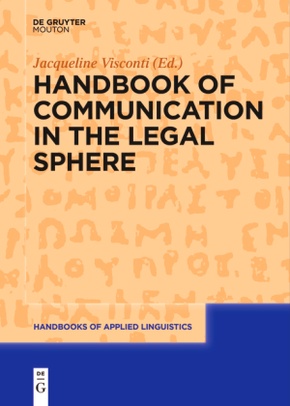Handbook of Communication in the Legal Sphere
| Verlag | De Gruyter |
| Auflage | 2024 |
| Seiten | 488 |
| Format | 17,0 x 2,9 x 24,0 cm |
| Großformatiges Paperback. Klappenbroschur | |
| Gewicht | 837 g |
| Artikeltyp | Englisches Buch |
| Reihe | Handbooks of Applied Linguistics (HAL) 14 |
| EAN | 9781501510922 |
| Bestell-Nr | 50151092UA |
This volume explores communication and its implications on interpretation, vagueness, multilingualism, and multiculturalism. It investigates cross-cultural perspectives with original methods, models, and arguments emphasizing national, EU, and international perspectives. Both traditional fields of investigations along with an emerging new field (Legal Visual Studies) are discussed. Communication addresses the necessity of an ongoing interaction between jurilinguists and legal professionals. This interaction requires persuasive, convincing, and acceptable reasons in justifying transparency, visual analyses, and dialogue with the relevant audience.
The book is divided into five complementary sections: Professional Legal Communication; Legal Language in a Multilingual and Multicultural Context; Legal Communication in the Courtroom; Laws on Language and Language Rights; and Visualizing Legal Communication. The book shows the diversity in the understanding and practicing of leg al communication and paves the way to an interdisciplinary and cross-cultural operation in our common understanding of legal communication. This book is suitable for advanced students in Linguistics and Law, and for academics and researchers working in the field of Language and Law and jurilinguists.
Rezension:
"Overall, this is a highly relevant, well researched and well-edited book which will certainly inspire future research. It will be of interest to advanced students of legal linguistics, researchers in language and law, jurilinguists, and anyone interested in the interface between language and law, particularly communication in the legal sphere."
Lelija Socanac in: Linguist List 30.4584 (02.12.2019), https://linguistlist.org/issues/30/30-4584.html

